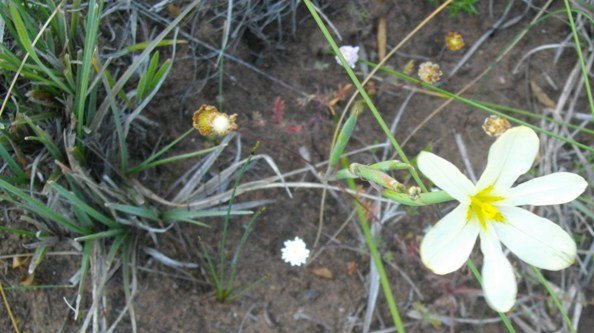Moraea bulbillifera

Moraea bulbillifera, in Afrikaans the uintjiestulp (veld bulb tulip), is a cormous perennial that reaches 30 cm to 50 cm in height. It grows just one long, narrow leaf (up to 7 mm wide) and a flower stalk annually from its perennial corm.
The plant is named bulbillifera for its tendency to grow clusters of bulbils or tiny bulblets next to the leaf on the stem after flowering in late winter to midspring. This natural supplementary survival strategy of not relying on seed for propagation only, but generating new plants vegetatively from bulbils, occurs in many species.
The flowers of M. bulbillifera are pale yellow, cream or orange with the inner tepals slightly smaller than the outer three. Each tepal has a bright yellow pointed marking inside its base.
The plant grows mainly in sandy flats and limestone derived soil along the coast from the Cape Peninsula to Port Elizabeth. It is also found in the renosterveld north of the coastal mountain range. The species is not threatened early in the twenty first century.
M. bulbillifera used to form part of the Homeria genus (Bond and Goldblatt, 1984; Mustart, et al, 1997).

